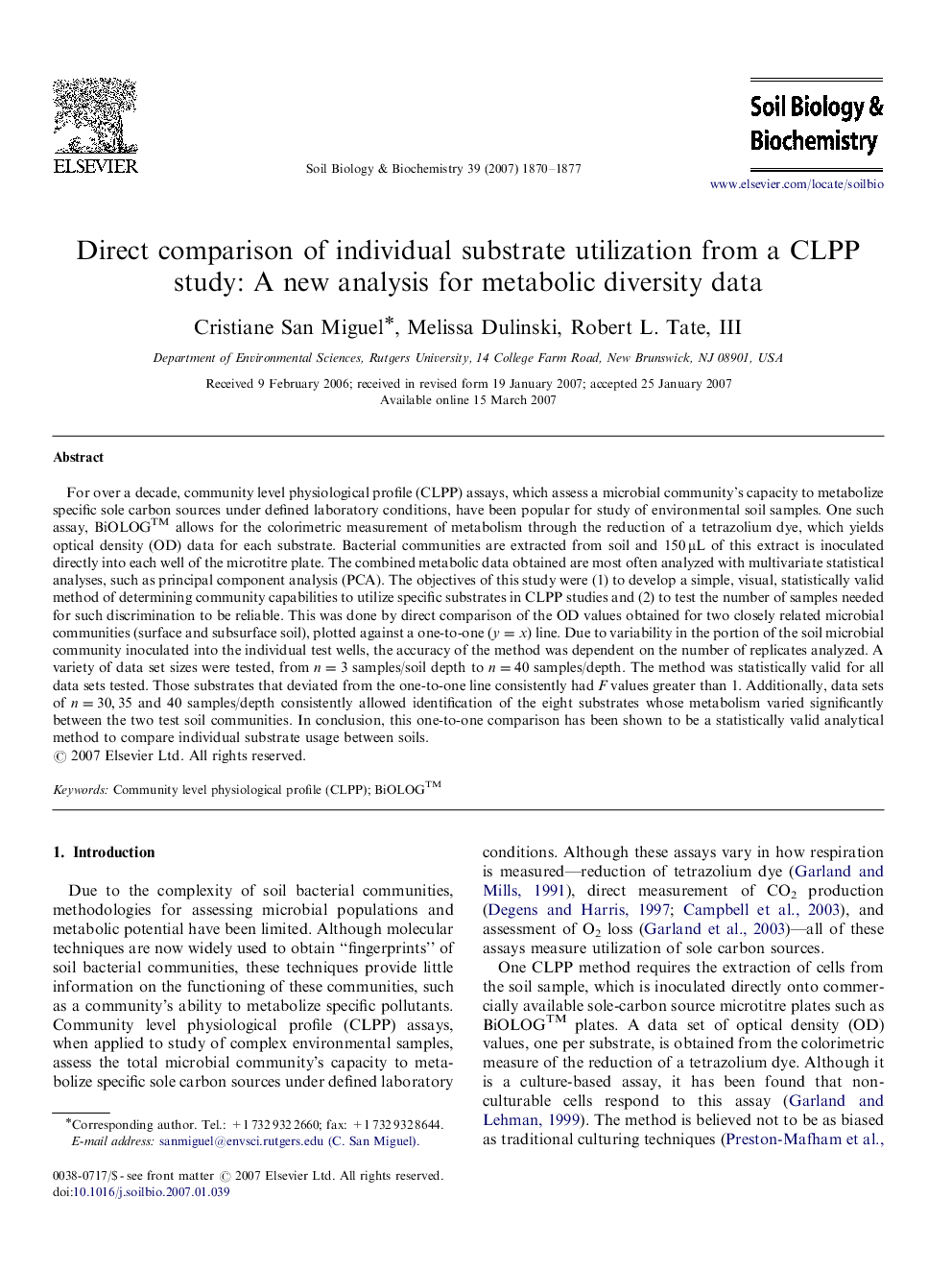| Article ID | Journal | Published Year | Pages | File Type |
|---|---|---|---|---|
| 2026052 | Soil Biology and Biochemistry | 2007 | 8 Pages |
For over a decade, community level physiological profile (CLPP) assays, which assess a microbial community's capacity to metabolize specific sole carbon sources under defined laboratory conditions, have been popular for study of environmental soil samples. One such assay, BiOLOG™ allows for the colorimetric measurement of metabolism through the reduction of a tetrazolium dye, which yields optical density (OD) data for each substrate. Bacterial communities are extracted from soil and 150 μL of this extract is inoculated directly into each well of the microtitre plate. The combined metabolic data obtained are most often analyzed with multivariate statistical analyses, such as principal component analysis (PCA). The objectives of this study were (1) to develop a simple, visual, statistically valid method of determining community capabilities to utilize specific substrates in CLPP studies and (2) to test the number of samples needed for such discrimination to be reliable. This was done by direct comparison of the OD values obtained for two closely related microbial communities (surface and subsurface soil), plotted against a one-to-one (y=xy=x) line. Due to variability in the portion of the soil microbial community inoculated into the individual test wells, the accuracy of the method was dependent on the number of replicates analyzed. A variety of data set sizes were tested, from n=3n=3 samples/soil depth to n=40n=40 samples/depth. The method was statistically valid for all data sets tested. Those substrates that deviated from the one-to-one line consistently had F values greater than 1. Additionally, data sets of n=30,35n=30,35 and 40 samples/depth consistently allowed identification of the eight substrates whose metabolism varied significantly between the two test soil communities. In conclusion, this one-to-one comparison has been shown to be a statistically valid analytical method to compare individual substrate usage between soils.
